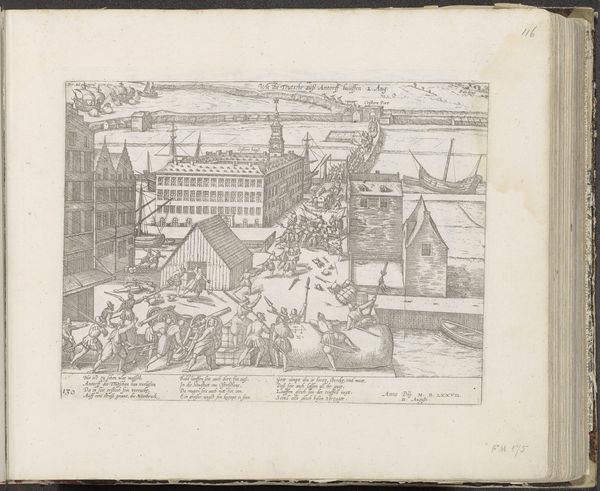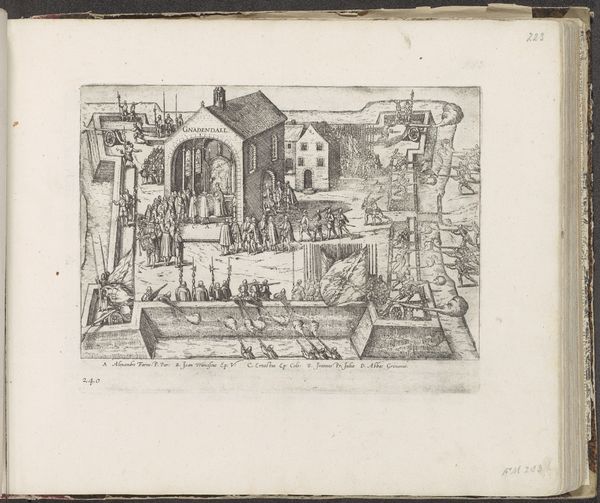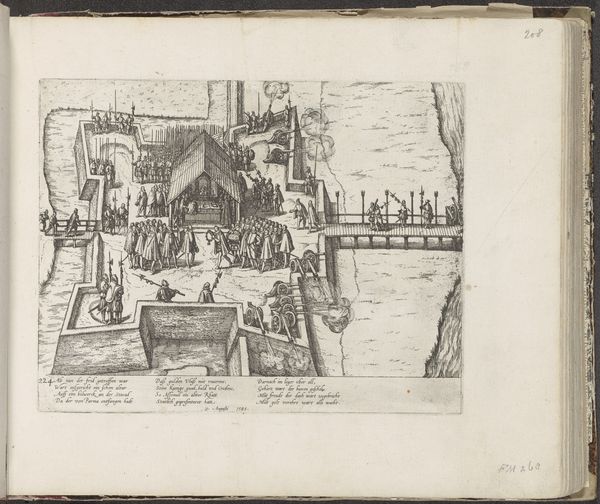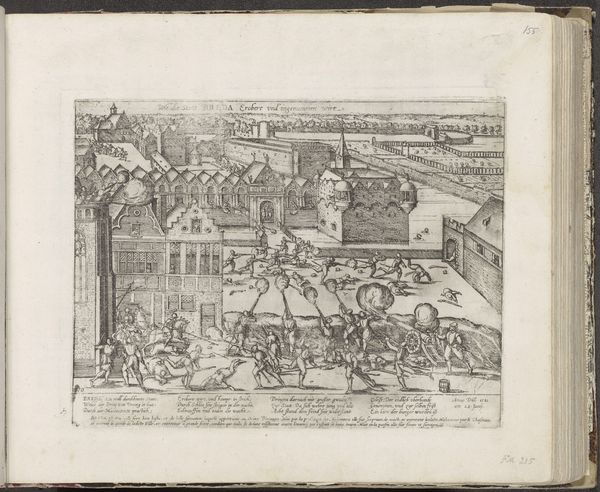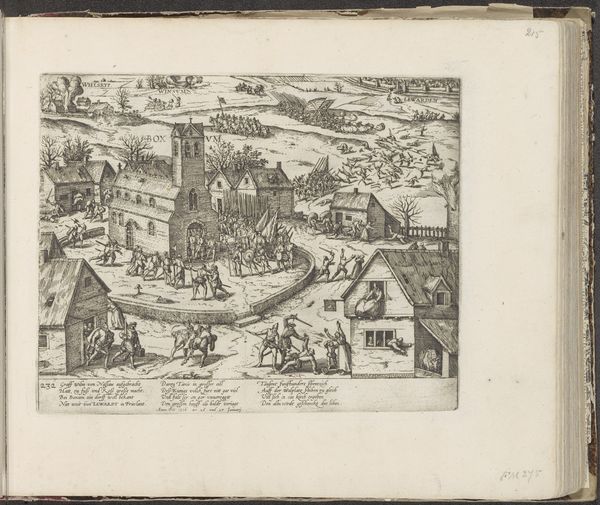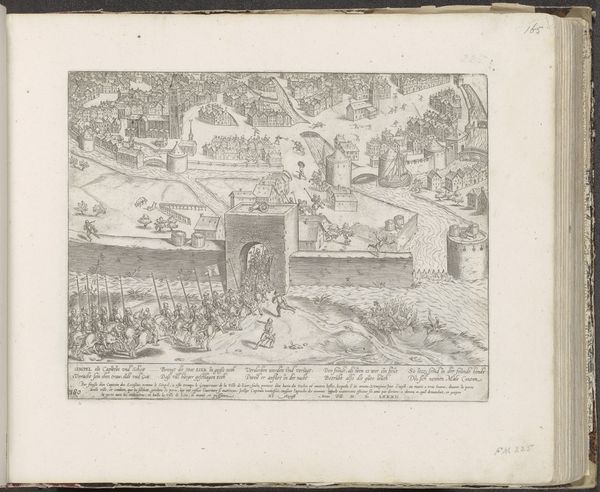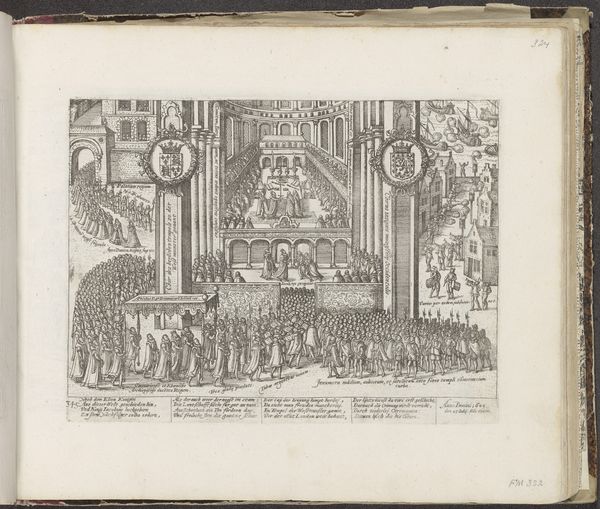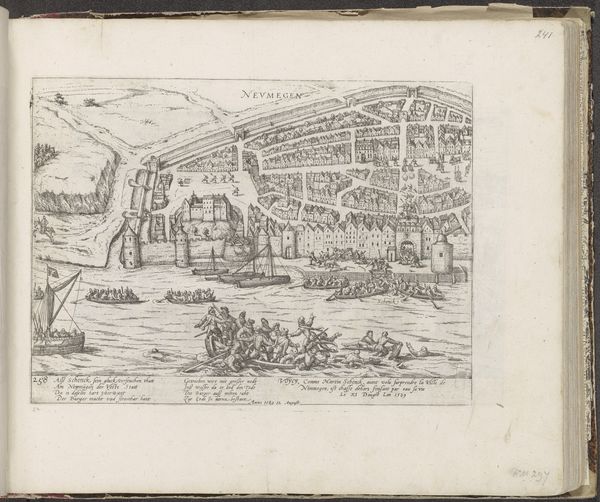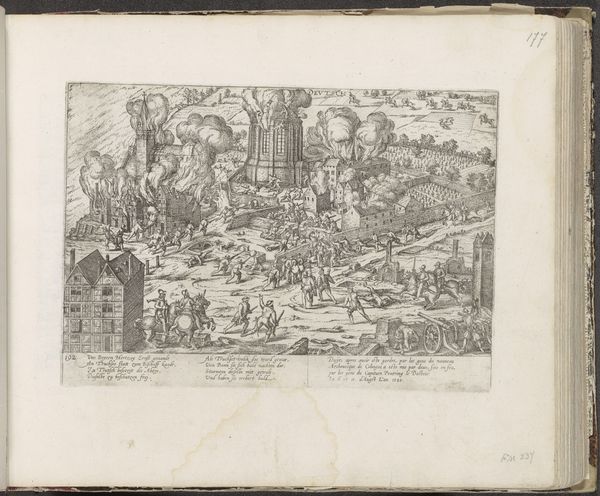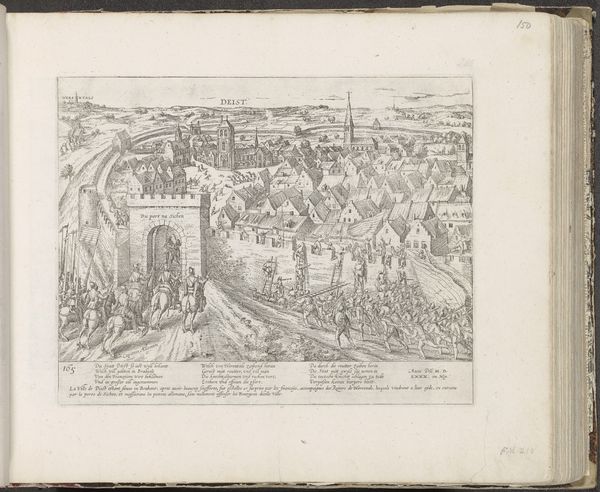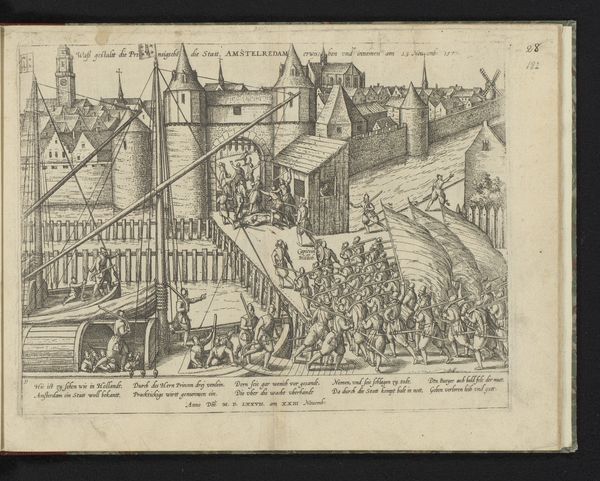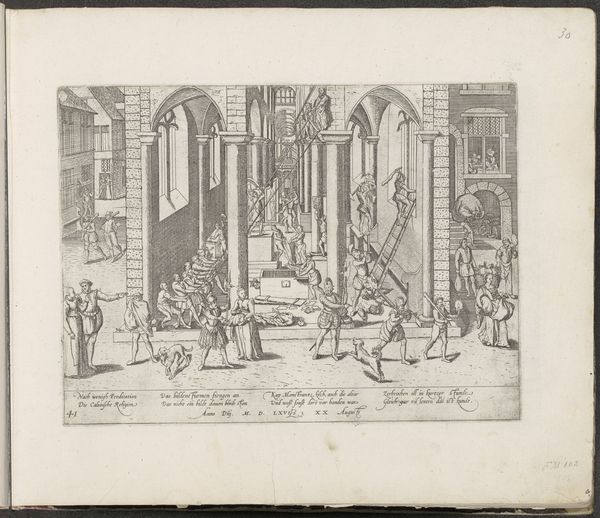
print, etching, engraving
#
medieval
#
narrative-art
# print
#
pen sketch
#
etching
#
landscape
#
form
#
pen-ink sketch
#
line
#
history-painting
#
northern-renaissance
#
engraving
#
realism
Dimensions: height 213 mm, width 276 mm
Copyright: Rijks Museum: Open Domain
Editor: This engraving, "Don Juan verovert de citadel van Namen, 1577," made around 1581-1585 by Frans Hogenberg, depicts a dynamic scene with many figures on horseback storming a citadel. It's held here at the Rijksmuseum. The level of detail in such a small print is striking. What symbolic weight do you see in this depiction of a siege? Curator: Notice how Hogenberg uses line and perspective. The scene's depth pulls you in, doesn’t it? The figures rushing the citadel symbolize not just military conquest, but perhaps a deeper societal upheaval. Sieges in art often represent times of great transformation and change, both violent and necessary. This capture becomes a symbol. Editor: Symbol of what, exactly? The end of one era, and beginning of another? Is it all just war and violence? Curator: It's not always straightforward, is it? Look closer, at the walled garden, for example. What meanings could those suggest in juxtaposition to all the soldiers? One, certainly, could be ideas around order and control versus wild invasion. What emotions do those spaces invoke when set side by side? This is more than a simple battle. Hogenberg is capturing a turning point. It speaks to power, legacy, and maybe, even the fleeting nature of control. Editor: I never thought about the garden offering such complex insights! Thanks, seeing those older ideas reframed makes it click a lot more for me. Curator: Indeed. Visual language allows these old prints to speak across centuries.
Comments
No comments
Be the first to comment and join the conversation on the ultimate creative platform.

